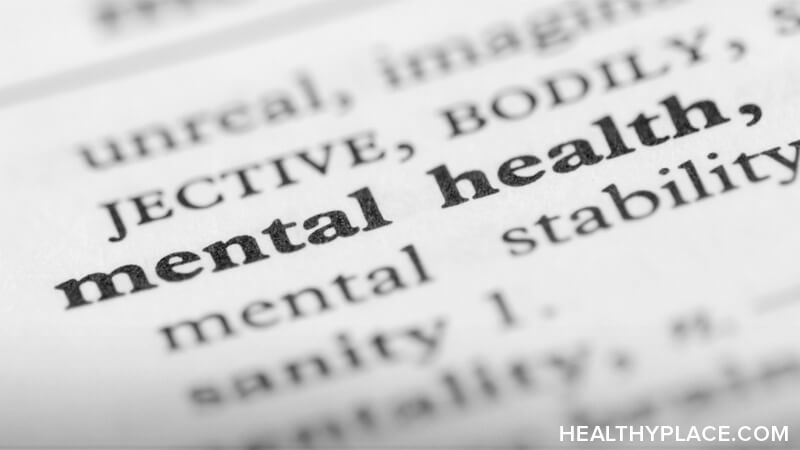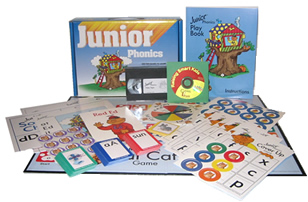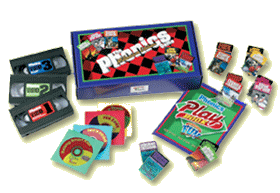 The following is a brief overview of the most common medications used in the UK for the treatment of ADHD. We do not endorse any of the following but do recognise the need for a description of these medications to enable those who have been diagnosed to make informed choices in the treatment they or their child receives.
The following is a brief overview of the most common medications used in the UK for the treatment of ADHD. We do not endorse any of the following but do recognise the need for a description of these medications to enable those who have been diagnosed to make informed choices in the treatment they or their child receives.
For more information and also for details on other medications available outside the UK we recommend the Medication List on Taming The Triad by Margie Sweeney M.D. Also, check out the ADD/ADHD section on the popular Remedyfind website where real users have rated many of the medications and treatments available.
Please note that the following is not intended to be a substitute for professional medical advice. It is only intended as a guide, purely for information only. Any medication or alteration of current medications should be discussed fully with your physician or other medical professional.
Methylphenidate
This is the generic name for one of the most common medications for ADHD - there are a number of brand names which are detailed below.
Cautions: mild hypertension (contra-indicated if moderate or severe)-monitor blood pressure; history of epilepsy (discontinue if convulsions occur); tics and Tourette syndrome (use with caution)-discontinue if tics occur; monitor growth in children (see also below); avoid abrupt withdrawal; data on safety and efficacy of long-term use not complete.
SPECIAL CAUTIONS IN CHILDREN: Monitor height and weight as growth retardation may occur during prolonged therapy (drug free periods may allow catch-up in growth but withdraw slowly to avoid inducing depression or renewed hyperactivity). In psychotic children may exacerbate behavioural disturbances and thought disorder.
Contra-indications: cardiovascular disease including moderate to severe hypertension, hyperexcitability or agitated states, hyperthyroidism, history of drug or alcohol abuse, glaucoma, pregnancy and breast-feeding - DRIVING. May affect performance of skilled tasks (e.g. driving); effects of alcohol unpredictable.
EVENING DOSE. If effect wears off in evening (with rebound hyperactivity) a dose at bedtime may be appropriate (establish need with trial bedtime dose)
Over the years I have been asked a number of questions as to how the fast acting forms of Methylphenidate and the slow release forms work and roughly what is equal to what.
I am certainly not medically qualifed so please remember that these are very rough ideas which I have learnt and how I view things over the years!!
Ritalin - Methylphenidate
This is licensed in the UK for the treatment of children - however Ritalin can be prescribed for adults, as it does not have a licence for adults it can only be prescribed through the individual doctors clinical judgement.
Ritalin is one of the stimulant drugs and is a derivative of amphetamine - when used correctly it is safe and effective.
Ritalin reduces hyperactivity and impulsiveness and increases the attention span.
It is a fast absorbing medication and is usually absorbed within ½ hour reaching maximum effectiveness within 1 - 2 hours after 4 - 5 hours it has passed through the system.
There is no evidence that Ritalin can become addictive or the patient become dependant.
Side effects can include:
Insomnia, loss of appetite
Both of which usually return to normal within a short time but proper monitoring by a qualified ADHD aware doctor is essential
Less common side effects can include:-
Tics, irritability, depression, tummy aches, headaches, nausea, dizziness, dry mouth and constipation.
These are mainly seen at higher doses and are not always attributed to the Ritalin. They should therefore be discussed with the doctor.
There is no evidence to suggest that Ritalin free holidays are necessary and certainly the idea of only using in school time is unnecessary.
Ritalin releases dopamine from the storage vessels.
Equasym - Methylphenidate
This is a new generic form of Methylphenidate which has just been brought out in the UK by UCB Pharma.
This medication is available in not only the 10mg tablet form but also in 5mg and 20mg tablets. This will eliminate the need for halving tablets.
The Effects and Side Effects are the same as Methylphenidate above.
The Slow Release form of Equasym, Equasym XL known as Metadate CD in the USA is available off licence in the UK. The Pharmacist would have to get in touch with Celltech who fax them a form which they can then fax back with the details and the medication is sent down the following day.
Equasym XL - Methylphenidate
This is a new generic form of Methylphenidate which has just been brought out in the UK by UCB Pharma.
This medication is available in 10mg, 20mg or 30mg capsules.
The Effects and Side Effects are the same as Methylphenidate above.
The Slow Release form of Equasym XL is known as Metadate CD in the USA.
Concerta
Concerta™ is an extended-release formulation of methylphenidate tablets for ADHD treatment which is designed to last throughout the day with just one dose. Methylphenidate is the most commonly prescribed medication for treating and managing ADHD. It has been used safely and successfully among children and adults for more than 25 years.
Concerta™ is now licensed and available in the UK.
Concerta™ is an integral part of a total treatment program that typically includes behavior modification and medication.
How does Concerta™ work? Concerta™ is designed to be taken just once a day in the morning, before a child leaves for school. The drug over-coat dissolves within one hour providing an initial dose of methylphenidate. The medication is then released gradually in a smooth pattern, improving attention and behavior throughout the day. The advanced system was designed to help a child maintain focus without in-school and after-school dosing. Due to its controlled release, Concerta™ minimizes the peaks and valleys-the fluctuating levels of medicine in the blood-associated with other medications when they are taken more than once per day.
Concerta™ is available in 18 mg and 36 mg tablets. It should be taken in the morning, with or without breakfast. Concerta™ tablets must be swallowed whole with the aid of liquid, such as water, milk, or juice. Concerta™ must not be chewed, divided, or crushed.
Concerta™ was developed by ALZA for Crescendo Pharmaceuticals. On August 1, 2000, the U.S. Food and Drug Administration approved the new drug application for Concerta™ for the treatment of ADHD. The product will be manufactured and marketed by ALZA. McNeil Consumer Healthcare will co-promote Concerta™ in the U.S. For more information see concerta.net
Side Effects In a controlled clinical study with patients using Concerta™, the most common side effects reported were headache(14%), upper respiratory tract infection (8%), stomachache (7%), vomiting (4%), loss of appetite (4%), sleeplessness (4%), increased cough (4%), sore throat (4%), sinusitis (3%), and dizziness (2%).
Who shouldn't use Concerta™ ? Concerta™ should not be taken by patients who: have significant anxiety, tension, or agitation, since Concerta™ may make these conditions worse; are allergic to methylphenidate or any of the other ingredients in Concerta™; have glaucoma, an eye disease; have tics or Tourette's syndrome, or a family history of Tourette's syndrome; are taking a prescription monoamine oxidase inhibitor (MAOI). Ordinarily, Concerta™ should not be administered to patients with preexisting severe gastrointestinal narrowing. Concerta™ should not be used in children under six years, since safety and efficacy in this age group have not been established.
Concerta™ should be given cautiously to patients with a history of drug dependence or alcoholism. Chronic abusive use can lead to marked tolerance and psychological dependence. (See Boxed Warning).
Q. Can I crush the fast acting tablet if my child won't swallow it?
A. Crushing is not a good idea as the Ritalin/Equasym is bitter and swollowing is quicker as a tablet, than a powder or pieces. Try giving a quarter which is easier to swallow, placed far back on his tongue, where the bitterness is less obvious with his favourite drink. It should just wash down. When used to a quarter, try a two quarters (half) and eventually a full half and if required a whole eventually. Also compliment him when he manages to succeed. A sip of the drink before you start also helps. However crushed and mixed with something they like may be alright providing the bitter taste does not come through!
The Slow Release tablets such as Concerta XL and Equasym XL should not be crushed or opened in any way as this will make them ineffective.
a From a question posted on adders.org forum and answered by Dr Billy Levin from South Africa
Strattera
Strattera, developed by Eli Lilly and Company (NYSE:LLY & UK), is the first licensed treatment for ADHD that is not a stimulant medication.
Strattera, a selective norepinephrine reuptake inhibitor, has a different pharmacologic mechanism than other currently approved ADHD treatments. It's not known precisely how atomoxetine reduces ADHD symptoms. Scientists believe it works by blocking or slowing reabsorption of norepinephrine, a brain chemical considered important in regulating attention, impulsivity and activity levels. This keeps more norepinephrine at work in the tiny spaces between neurons in the brain.
Side effects can include: Most people in clinical studies who experienced side effects were not bothered enough to stop using atomoxetine. The most common side effects in children and adolescents were decreased appetite, nausea, vomiting, tiredness and upset stomach. In adults, the most common side effects were problems sleeping, dry mouth, decreased appetite, upset stomach, nausea or vomiting, dizziness, problems urinating, and sexual side effects.
Ritalin S.R.
Slow Release Ritalin is now available in the UK, the only problem is that to obtain this means that you need to take a prescription to your pharmacist who then has to fax it to BR Pharma on the following number (UK Only), 020 8207 5557 (Tel:020 8238 6770). BR Pharma then deliver to the pharmacist the next day. They can only provide this service for prescriptions for 3 months supply, (approx 120 tablets). The advantage of SR is it could remove the need for a mid-day dose at school, by allowing a slow released stream of medication into the system for about 6 hours, it does however take longer to get into the system to start with.
Be aware that Ritalin SR may not work for all.
Dexedrine (Dextroamphetamine Sulfate)
Dexedrine affects the neurotransmitter Norepinephrine primarily, and secondarily Dopamine, which is significantly different than Ritalin, and can produce very different results for patients. Dexedrine is only similar to Ritalin in that the same type of side effects can occasionally be seen. Dexedrine also appears to stay in the blood longer than Ritalin reducing the frequency of the dose.
Dexedrine inhibits re-uptake of dopamine.
Indications: narcolepsy, adjunct in the management of refractory hyperkinetic states in children (under specialist supervision)
Cautions: mild hypertension (contra-indicated if moderate or severe)-monitor blood pressure; history of epilepsy (discontinue if convulsions occur); tics and Tourette syndrome (use with caution)-discontinue if tics occur; monitor growth in children (see also below); avoid abrupt withdrawal; data on safety and efficacy of long-term use not complete.
SPECIAL CAUTIONS IN CHILDREN. Monitor height and weight as growth retardation may occur during prolonged therapy (drug free periods may allow catch-up in growth but withdraw slowly to avoid inducing depression or renewed hyperactivity).
In psychotic children may exacerbate behavioural disturbances and thought disorder.
Contra-indications: cardiovascular disease including moderate to severe hypertension, hyperexcitability or agitated states, hyperthyroidism, history of drug or alcohol abuse, glaucoma, pregnancy and breast-feeding.
DRIVING. May affect performance of skilled tasks (e.g. driving); effects of alcohol unpredictable.
Side-effects: insomnia, restlessness, irritability and excitability, nervousness, night terrors, euphoria, tremor, dizziness, headache; convulsions; dependence and tolerance, sometimes psychosis; anorexia, gastro-intestinal symptoms, growth retardation in children; dry mouth, sweating, tachycardia (and anginal pain), palpitations, increased blood pressure; visual disturbances; cardiomyopathy reported with chronic use; central stimulants have provoked choreoathetoid movements, tics and Tourette syndrome in predisposed individuals (see also Cautions above); overdosage: Stimulants AMPHETAMINES - These cause wakefulness, excessive activity, paranoia, hallucinations, and hypertension followed by exhaustion, convulsions, hyperthermia, and coma. The early stages can be controlled by diazepam or lorazepam; advice should be sought from a poisons information centre on the management of hypertension. Later, tepid sponging, anticonvulsants, and artificial respiration may be needed.
Dose: Hyperkinesia, CHILD over 6 years 5-10 mg daily, increased if necessary by 5 mg at intervals of 1 week to usual max. 20 mg daily (older children have received max. 40 mg daily); under 6 years not recommended
Adderall
A single entity amphetamine product combining the neutral sulfate salts of dextroamphetamine and amphetamine, with the dextro isomer of amphetamine saccharate and d, l-amphetamine aspartate.
A recent study in the U.S. which was published in the Journal of the American Academy of Child and Adolescent Psychiatry in May 2000, said: "Adderall(R) (mixed salts of a single-entity amphetamine product) is significantly more effective at reducing inattention, oppositional behaviour, and other symptoms of attention deficit/hyperactivity disorder (ADHD) than methylphenidate, an older ADHD treatment.
The study of 58 children with ADHD also found that the benefits of Adderall last longer than those of methylphenidate (which is sold under the brand name Ritalin(R)). In fact, 70 percent of patients taking a single morning dose of Adderall found significant improvement in ADHD symptoms, while just 15 percent of patients taking methylphenidate improved significantly with only one dose."
Side effects can include:
- Cardiovascular: Palpitations, tachycardia, elevation of blood pressure. There have been isolated reports of cardiomyopathy associated with chronic amphetamine use.
- Central Nervous System: Psychotic episodes at recommended doses (rare), overstimulation, restlessness, dizziness, insomnia, euphoria, dyskinesia, dysphoria, tremor, headache, exacerbation of motor and phonic tics and Tourette's syndrome.
- Gastrointestinal: Dryness of the mouth, unpleasant taste, diarrhea, constipation, other gastrointestinal disturbances. Anorexia and weight loss may occur as undesirable effects when amphetamines are used for other than the anorectic effect.
- Allergic: Urticaria.
- Endocrine: Impotence, changes in libido.
See Shire Pharmaceuticals for more information.
Adderall is now available off licence in the UK though only on the same basis as Ritalin SR i.e. your pharmacist has to fax your prescription to BR Pharma on the following number (UK Only), (Tel:020 8238 6770). BR Pharma then deliver to the pharmacist the next day. Also, only packs of 100 tablets are available in both 5 and 10 mg doses. ADDerall XR is now also available in 10, 20 and 30mg doses. This formulation provides an all day treatment with one morning dose. There is an immediate 50% release of the active ingredient followed by a further 50% being released at midday.
Focalin
Dexmethylphenidate Hydrochloride
NOTE: This preparation may contain one or more substances that are restricted in certain sports competitors should check with the appropriate sports authorities
Drug Profile
Dexmethylphenidate hydrochloride is the d-threo-enantiomer of racemic methylphenidate hydrochloride. It is used as a central stimulant in the treatment of hyperactivity disorders in children.
For patients new to methylphenidate the starting dose of dexmethylphenidate hydrochloride is 2.5 mg twice daily. Each dose should be given at least four hours apart. Dosage may be adjusted in 2.5 to 5 mg increments weekly to a maximum of 10 mg twice daily.
For patients currently using methylphenidate the starting dose of dexmethylphenidate hydrochloride is half the dose of the racemic substance. The maximum recommended dose is 10 mg twice daily. Dexmethylphenidate should be stopped if there is no improvement in symptoms after appropriate adjustments in dosage over one month. It also needs to be stopped from time to time in those who do respond to assess the patient's condition.
As this medication is a preperation of both dexmethylphenidate hydrochloride and methylphenidate hydrochloride :-
Uses and Administration, Adverse Effects, Treatment, and Precautions, Pharmacokinetics and Preparations please check out:- Martindale: The Complete Drug Reference and should be taken as to being appropriate to majority of the medications on this page that have either of the ingredients above - Ed.
Focalin is now available off licence in the UK though only on the same basis as Ritalin SR i.e. your pharmacist has to fax your prescription to BR Pharma on the following number (UK Only), (Tel:020 8238 6770). BR Pharma then deliver to the pharmacist the next day.
The following are sometimes used with the stimulant medications to help with sleep problems or other associated conditions so the information we have here is not that extensive so always speak to the doctor to find out more information about these and ask how these medications will be monitored:
Imipramine - Tofranil
This is one of the tricylic antidepressants.
Imipramine helps with anxiety and depression and is used when stimulant medication fails to get a response or it not appropriate to be given. It is not as effective with the core ADHD symptoms.
Side effects can include:
dry mouth, constipation, rash, raised blood pressure, confusion, seizures, abnormal heart rhythms.
Only the first two are usually seen however this medication should be carefully monitored by the doctor and regular blood pressure and pulse checks should be made. Also if there is a concern EEG recordings can be taken.
Imipramine inhibits re-uptake of norepinephrine.
Clonidine - Catapres - Dixirit
Clonidine is an antihypertensive medication and is often used later in the day to help combat insomnia which can be caused by stimulant medication. Clonidine can help symptoms by: -
Decreasing impulsivity and hyperactivity, decreasing aggression, improving sleep.
Clonidine is usually given in conjunction with Ritalin or Dexedrine,
Side effects can include: -
- Sedation, dry mouth, nausea, dizziness, rash
- There is a very slight concern of heart deaths and Clonidine must be withdrawn gradually.
- Overdose is very dangerous.
- Clonidine blocks norepinephrine auto-receptors.
Clonidine / Catapres Patches are also available, these appear to last for about 5 days in children compared to 7 days in adults. The patch may be cut to adjust doseage. It can take up to 2 - 4 weeks to see any effect and maximum effect can take several months. This can also be the case in tablet form.
Clonidine should only be discontinued under proper guidence for gradual withdrawal to avoid any withdrawal symptoms.
Drug Combinations
If certain medications help only some of the symptoms a combination of medications may be tried, but only in consultation with your physician or medical practitioner.
For example Tricylic Antidepressiants can help with depression but ADHD symptoms remain, Ritalin or Dexedrine can be used in conjunction to enable relief of all symptoms. Likewise Clonidine can be used to combat aggressive behaviour along with Ritalin or Dexedrine for the other ADHD symptoms.
next: ADHD Treatment Overview: Psychotherapy
~ back to adders.org homepage
~ adhd library articles
~ all add/adhd articles
 I was born in West Jerusalem in 1937, when Palestine was under British mandate. In my teen years, I was in a psychologically oriented youth movement and later in the commune movement of this orientation till the age of 32.
I was born in West Jerusalem in 1937, when Palestine was under British mandate. In my teen years, I was in a psychologically oriented youth movement and later in the commune movement of this orientation till the age of 32. According to the American Academy of Child and Adolescent Psychiatry, all of the activities mentioned above may be signs of an eating disorder. Anorexia nervosa and bulimia nervosa are eating disorders that are increasing among teens and children, especially young women but not excluding young men.
According to the American Academy of Child and Adolescent Psychiatry, all of the activities mentioned above may be signs of an eating disorder. Anorexia nervosa and bulimia nervosa are eating disorders that are increasing among teens and children, especially young women but not excluding young men.
 The following is a brief overview of the most common medications used in the UK for the treatment of ADHD. We do not endorse any of the following but do recognise the need for a description of these medications to enable those who have been diagnosed to make informed choices in the treatment they or their child receives.
The following is a brief overview of the most common medications used in the UK for the treatment of ADHD. We do not endorse any of the following but do recognise the need for a description of these medications to enable those who have been diagnosed to make informed choices in the treatment they or their child receives. Words have a magical impact on your life! Words inspire, encourage, motivate, stimulate your thinking and create a future vision that can change your life!
Words have a magical impact on your life! Words inspire, encourage, motivate, stimulate your thinking and create a future vision that can change your life! Special Bonus: Each audio program contains a 46-page, pocket-sized "LifeWords for Success" booklet featuring all of the 333 quotes on these audio cassettes with author acknowledgement.
Special Bonus: Each audio program contains a 46-page, pocket-sized "LifeWords for Success" booklet featuring all of the 333 quotes on these audio cassettes with author acknowledgement.










